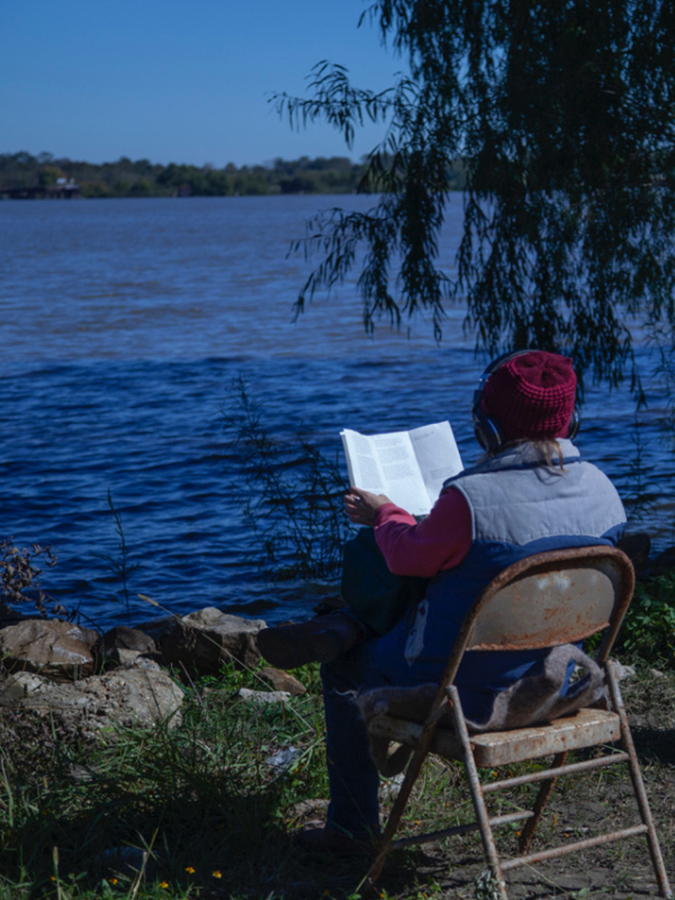A river is always going somewhere, always coming from somewhere. As it passes, the sound we hear is the movement of water from before and after, the past and the future. Whatever present moment the river might invite us to, it is a thick moment, a moment in motion. From 2013 when it began, to its first “listening action” as part of the Mississippi. An Anthropocene River, this project has been trying to create conditions to perceive gaps between what literally cannot be seen and heard in nature, but which already and always exists in a place. Imaginative listening is needed for this; this works asks if and how this kind of listening possible, and which form it might take.
Listening to the Mississippi is an iterative project that has unfolded since 2013 and currently manifests as a sound composition and traveling listening station. Using underwater recordings gathered in 2015 by artists Monica Haller and Sebastian Müllauer that span the river from the headwaters to the Gulf, Listening to the Mississippi asks listeners to orient themselves to the river through their sense of sound, rather than by sight alone. The project seeks to understand the Mississippi as a dynamic condition that includes the past and the present and stretches across a great distance. Through the use of mobile listening packs that include headphones, a felted mat, and listening notes, the project cultivates distinct moments of engagement that accumulate through compilations of sound and the activation of other senses: sight, smell, and even touch.
Listening to the Mississippi has seen Monica Moses Haller collaborate with artists from a diverse range of disciplines. The most recent iteration of the project, part of the installation The Current shown at HKW in Berlin in fall 2020, brought together the work of composers Judd Greenstein and Michi Wiancko with designer Matthew Rezac, with further written contributions by Tia-Simone Gardner, Matt Rahaim, and Monique Verdin among many others. Crossing through a variety of media, the contribution evoked a sensorial approach to the Mississippi’s fluvial spaces—in spite of great distance to its site of reference and, in the online version, in spite of the disconnect following social distancing regulations during the COVID-19 pandemic.
For Mississippi. An Anthropocene River (2019), mobile listening packs were created that included headphones, a felted mat, and listening notes. Artists Erika Terwilliger, Prerna, Harriet Matzdorf, and Monica Haller made these packs to transport, hold, and support Wiancko and Greenstein’s composition. The listening pack invites the listener to sit, stay, linger, and be present where they are. It is designed to be mobile and adaptable for listening at both rural and urban sites along the riverbank, from the Upper Mississippi to New Orleans. Visitors arriving at each listening station can check out a listening pack and explore the composition at their own pace, walking where they choose along levees and river battures, and adjacent woodlands.

